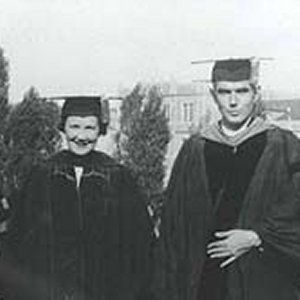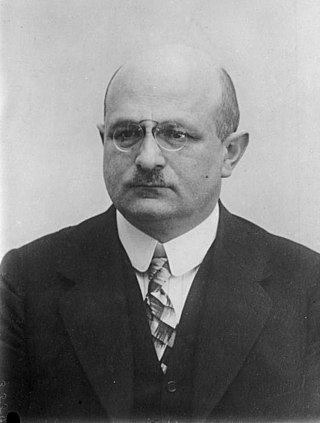Related Research Articles

Graz University of Technology is one of five universities in Styria, Austria. It was founded in 1811 by Archduke John of Austria and is the oldest science and technology research and educational institute in Austria. It currently comprises seven faculties and is a public university. It offers 19 bachelors and 35 masters study programmes across all technology and natural science disciplines. Doctoral training is organised in 14 English-speaking doctoral schools. The university has more than 13,000 students, and approximately 2,000 students graduate every year. Science study programmes are offered in the framework of NAWI Graz together with the University of Graz.

TU Wien, also known as the Vienna University of Technology, is a public research university in Vienna, Austria.

The Gottfried Wilhelm Leibniz Prize, in short Leibniz Prize, is awarded by the German Research Foundation to "exceptional scientists and academics for their outstanding achievements in the field of research". Since 1986, up to ten prizes are awarded annually to individuals or research groups working at a research institution in Germany or at a German research institution abroad. It is considered the most important research award in Germany.

Karl Ferdinand Herzfeld was an Austrian-American physicist.
Friedrich Hopfner was an Austrian geodesist, geophysicist and planetary scientist.

Franz Serafin Exner was an Austrian physicist.

Otto Scherzer was a German theoretical physicist who made contributions to electron microscopy.

Carl Wilhelm Ramsauer was a German professor of physics and research physicist, famous for the discovery of the Ramsauer–Townsend effect. He pioneered the field of electron and proton collisions with gas molecules.
Fritz Eduard Josef Maria Sauter was an Austrian-German physicist who worked mostly in quantum electrodynamics and solid-state physics.
Georg Carl Stetter was an Austrian-German nuclear physicist. Stetter was Director of the Second Physics Institute of the University of Vienna. He was a principal member of the German nuclear energy project, also known as the Uranium Club. In the latter years of World War II, he was also the Director of the Institute for Neutron Research. After the war, he was dismissed from his university positions, and he then became involved in dust protection research. After his dismissal was overturned, he became Director of the First Physics Institute of the University of Vienna, and he began research on aerosols. In 1962, Stetter became a full Member of the Austrian Academy of Sciences. In that same year, the Academy established their Commission for Clean Air, and Stetter served as its chairman until 1985.
Walter Friedrich Karl Weizel was a German theoretical physicist and politician. As a result of his opposition to National Socialism in Germany, he was forced into early retirement for a short duration in 1933. He was a full at the University of Bonn, from 1936 to 1969. After World War II, he helped to establish the Jülich Research Center, and he was a state representative of the Social Democratic Party of Germany.
Alfons Bühl (1900–1988) was a German physicist. From 1934 to 1945, he was director of the physics department at the Technische Hochschule Karlsruhe.

Josef Alexander Kozeny was an Austrian hydraulic engineer and physicist. Today he is mainly remembered for the Kozeny–Carman equation which describes fluid flowing through a packed bed of solids.
The Wittgenstein Award is an Austrian science award supporting the notion that "scientists should be guaranteed the greatest possible freedom and flexibility in the performance of their research." The prize money of up to 1.5 million euro make it the most highly endowed science award of Austria, money that is tied to research activities within the five years following the award. The Wittgenstein-Preis is named after the philosopher Ludwig Wittgenstein and is conferred once per year by the Austrian Science Fund on behalf of the Austrian Ministry for Science.

Friedrich Stadler is an Austrian historian and philosopher and professor for history and philosophy of science at the University of Vienna. He is the founder and long-time director of the Institute Vienna Circle, which was established as a Department of the Faculty of Philosophy and Education of the Vienna University in May 2011. Currently he is a permanent fellow of this department and serves at the same time as the Director of the co-operating Vienna Circle Society, which is the continuation of the former Institute Vienna Circle as an extra-university institution.

Heinrich Mache was an Austrian physicist. He won the Haitinger Prize of the Austrian Academy of Sciences in 1915.
The Haitinger Prize of the Austrian Academy of Sciences was founded in 1904 by the chemist and factory director, Ludwig Camillo Haitinger (1860–1945), who created the award in honor of his father, Karl Ludwig Haitinger. From 1905 to 1943 it was awarded every year, for "studies in chemistry and physics that proved to be of great practical use for industrial applications". The prize was awarded for the last time in the year 1954.
Otto Hittmair (1924–2003) was an Austrian theoretical physicist who made contributions to quantum mechanics, superconductivity and unified field theory. From 1987 to 1991 he was President of the Austrian Academy of Sciences.
Tibor Grasser is an electrical engineer and full professor at the Vienna University of Technology in Vienna, Austria. Since 2016 he heads the Institute for Microelectronics at that University. Grasser's research interests are focused on numerical simulation of solid-state devices and integrated circuits. For contributions to the modeling of the reliability of semiconductor devices, he was named a Fellow of the Institute of Electrical and Electronics Engineers (IEEE) in 2016.

Universities Austria is an advocacy organisation that supports research universities in Austria and promotes science, art, and research. It was founded in 1911. In 2008, it changed its name from Österreichische Rektorenkonferenz to Österreichische Universitätenkonferenz.
References
- ↑ "Ludwig Flamm". Österreichische Nationalbibliothek.
- ↑ Lindley, David (2005-03-25). "Focus: The Birth of new Wormholes". Physics. 15.